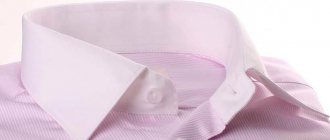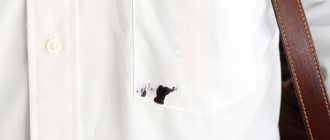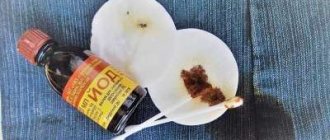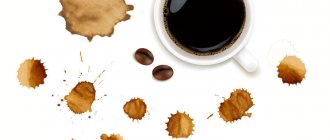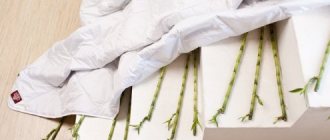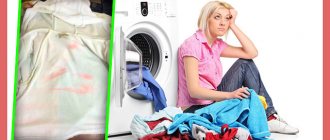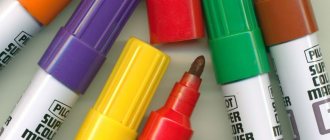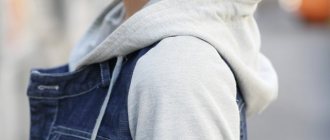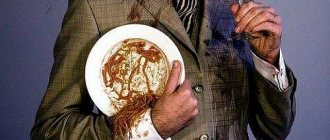The collar is one of the most important parts of a shirt, which is easy to stain and difficult to wash.
Depending on the type of contamination, you can choose a homemade recipe to eliminate the problem or use household chemicals.
In this article we will tell you how to wash the collar of a white or colored men's or women's shirt at home from the yellow stripe on it.
Rules for selecting whitening products
In order not to damage the fiber structure, spoil the product or shorten its service life, we follow simple rules.
- We bleach the shirt no more often than after four washes, otherwise the fabric will become thinner;
- When using ready-made bleach, follow the recommendations from the instructions;
- When washing a bleached shirt, do not put other things in the drum, especially colored ones;
- We wash natural and synthetic products separately;
- if a white shirt has colored inserts, wash it with added salt;
- We don’t store white things folded, because this way they turn yellow faster.
Features of removing various contaminants
When removing stains for greater efficiency, you should also take into account the type of specific stain and remove it in the best possible way:
- Products containing acids will help remove grease stains from the collar of a white shirt.
- Bleach will cope with most stains, provided that their use does not damage the fabric.
- Traces of food can be removed with simple washing powder or laundry soap.
If there is particularly heavy soiling, it is necessary to soak the shirt, having previously washed away the stains on it.
How to bleach white shirts at home
The “arsenal” of folk recipes is wide.
Laundry soap
It continues to be popular because it does a good job of restoring the whiteness of things.
- The shirt is moistened.
- Rub with soap, preferably marked 72%.
- Leave in soapy state for 30 minutes.
- Place in the washing machine and set the usual mode, adding powder with a bleaching effect.
Vodka with glycerin
Use glycerin from the pharmacy.
- Add 300 ml of liquid glycerin to a liter of vodka.
- Mix thoroughly and pour in 0.4 liters of warm water.
- Soak the shirt for 25 minutes.
- Wash the product by hand and rub it with soap.
- Immediately put the item in the washing machine using bleaching powder and conditioner.
Potassium permangantsovka
Using this technique, monitor the concentration of the solution and complete dissolution of the crystals.
- Heat two liters of water to 80 degrees.
- Carefully dissolve several crystals of potassium permanganate, making sure that the color of the solution is faint pink.
- Add a tablespoon of washing powder.
- The shirt is soaked, the container is closed with a lid, and left until the solution cools.
- Rinse the product thoroughly.
Hydroperite
To whiten a shirt, purchase the pharmaceutical drug Hydroperit.
- Grind three tablets into powder.
- Dissolve in heated water.
- Add two tbsp to three liters of water. spoons of powder and wash the shirt by hand.
- Leave in the solution for 20 minutes.
- Without rinsing, put the item in the machine along with bleach. Turn on the appropriate washing mode by adding washing powder.
Boric acid
Pharmacy boric acid will help bleach the product.
- Measure out 2 tbsp. spoons of liquid boric (orthoboric) acid.
- Dissolve the drug in hot water (take 4 liters).
- Soak the shirt.
- After two to three hours, the product is rinsed.
- To finally get rid of dirt, wash using washing powder.
Sodium perbonate
Sodium perbonate used to bleach wool will help remove yellowness from shirts.
- Heat two liters of water to 40 degrees.
- Add liquid sodium perbonate - 150 ml.
- Soak a white shirt for 15 minutes.
- Wash with added conditioner.
Vinegar
Table vinegar works well in tandem with tar soap.
- 2 liters of water are heated to 30 degrees.
- Add 70 ml of table vinegar with a concentration of 9%.
- The shirt is soaked.
- Cover the container with film and leave for one hour.
- Wash by hand, rub with tar soap and put into the drum of the machine, setting an intensive wash cycle.
Milk
Powdered milk helps restore white clothes to their former freshness.
- A full glass of powder is diluted in warm water (4 liters).
- Soak the product in the solution.
- Wash the shirt after 40 minutes.
Lemon acid
Citric acid, which has good bleaching characteristics, will be a salvation for white products.
- Moisten the contaminated part.
- Sprinkle a thin layer of powdered citric acid on top.
- Wash after 30 minutes.
Soda
Known for its bleaching properties, baking soda will restore the whiteness of your shirt.
- Measure out half a glass of soda.
- Mix with the same amount of washing powder.
- Pour the mixture into the powder compartment of the washing machine.
- Wash items as usual.
You can first extinguish the soda with table vinegar, taking the components in equal volumes, and then apply it to the stain.
Chlorhexidine
You will need liquid Chlorhexidine with a concentration of 6%.
- Boil 2.5 liters of purified water.
- Add 200 grams of soda, stirring until completely dissolved.
- Cool the solution to 40 degrees.
- Pour in Chlorhexidine - 130 ml.
- After soaking the shirts, cover the container with a lid and leave for half an hour.
- Turn on the intensive wash mode in the machine by pouring baking soda into the compartment along with the bleaching washing powder (3 tablespoons are enough).
Top 3 special tools
Household chemicals that are designed to remove stains will also help tidy up shirt collars. The top 3 products included drugs that have proven themselves well among housewives.
Vanish OXI Action
Vanish OXI Action for stain removal is one of the products that can help remove stains on white and colored shirts . A distinctive feature of the composition is the content of active oxygen.
This component has an effective effect on contamination, literally pushing it out of the fibers of the material. Depending on the purpose of use, you can choose a product with a convenient consistency: from liquid to powder.
Advantages of use:
- maintaining the brightness of colored fabrics;
- good removal of contaminants, especially fresh ones;
- Can be used as a supplement during the main wash cycle.
Disadvantages of the product:
- uneconomical consumption;
- specific smell;
- high price (from 150 rubles per bottle of 0.45 l);
- may show low effectiveness against old stains.
Instructions for use:
- Using a dispenser, apply the gel to the collar.
- Using the bottom of a cup or a brush, rub the area of contamination.
- Place the shirt in the drum of the washing machine.
- Pour detergent into a container for washing powder and add Vanish, measuring according to the instructions.
- After washing, hang the shirt on hangers.
Bos plus Maximum
This product has proven itself well as a budget stain remover. It is advisable to use it only on white shirts.
Advantages of the product:
- reasonable price (from 60 rubles per pack of 0.25 kg);
- stain removal efficiency;
- bleaching white items;
- can be used as a booster for regular laundry detergent;
- Possibility of use in non-hot water.
Cons: Only suitable for white shirts.
Soaking instructions:
- Fill a container with 10 liters. water.
- Measure out 2 times less washing powder or gel than usual.
- Dissolve it in water.
- Add 40 to 55 grams of Bos to the water.
- Stir.
- Place the shirt in the container for 20 minutes.
- Wash as usual, adding Bos powder.
- Rinse.
- Hang to dry on hangers.
Snowter pencil
The stain remover comes in pencil form. The compact shape makes it easy to remove stains without soaking in water.
Advantages:
- affordable price (from 55 rubles per piece);
- efficiency;
- availability;
- copes even with old stains;
- ease of use.
Minuses:
- may cause discoloration;
- cannot be used without gloves.
Instructions for use:
- Wet the collar of the shirt.
- Rub a pencil along the glossy fold until foam forms.
- After a quarter of an hour, rinse in water.
- Wash the entire shirt.
It is prohibited to expose the fabric to the stain remover for longer than the 15 minutes specified by the manufacturer. Otherwise, bleached spots may appear on the material.
Benefits of hydrogen peroxide (peroxide)
Various whitening compositions are prepared with the drug.
- Measure out salt and peroxide - a teaspoon at a time - and dilute the mixture with heated water; this amount will require 2 liters. If synthetics are subjected to bleaching, the water should be heated no higher than 40 degrees. For cotton, heat the water to 70 degrees. The clothes are soaked and kept for 20 minutes, remembering to turn them over periodically.
- Dissolve peroxide (two teaspoons per 4 liters of water). While stirring, keep the product in the solution for 15 minutes, then rinse and dry.
- Mix ammonia and peroxide - a tablespoon at a time - and pour five liters of hot water. The shirt is soaked and kept until the water cools down.
- Heat 2 liters of water to 60 degrees. Add a teaspoon of peroxide and the same amount of soda. Keep the item in the solution for 20 minutes, turning it over periodically.
Application of ammonia
The product is often used as part of “homemade bleaches”.
For 5 liters of slightly warmed water take 5 tbsp. spoons of ammonia. Dip the shirt in the solution for 3 hours, then wash.
The shirt will turn snow-white if you use ammonia and soda. For 5 liters of warm water take 5 tbsp. spoons of soda and 2 tbsp. spoons of ammonia. Soak the gray shirt in the solution and leave for 4 hours. Rinse and wash.
Heat two and a half liters of water to 40 degrees and pour in 50 ml of ammonia. While stirring, add fine salt - two tablespoons is enough. Having lowered the product into the solution, cover the basin with film and a towel. Leave for 45 minutes. Wash the product first by hand, then in a machine, adding washing powder and adding conditioner.
Traditional methods
You can bleach the collar of a white shirt at home using folk remedies. Vinegar, dishwashing detergent, ammonia, hydrogen peroxide, salt, talc, lemon and even potatoes will help here.
Dishwashing liquid
Dishwashing detergent will help to wash and remove yellow stains from the collar: it does an excellent job of removing greasy stains. To increase its effectiveness, you can mix the product (3 tsp) with hydrogen peroxide (2 tsp) and soda (3 tsp). Apply the solution to the collar, wait five to ten minutes, wash under running water.
Vinegar
Vinegar can remove dirt from a white item. To properly wash the collar, you need to apply a vinegar solution to it using a cotton swab, wait fifteen minutes, and wash.
Salt with ammonia
You can remove yellowness from the product and bleach the collar using salt. It is enough to dilute 1 tbsp. in 250 ml of water, apply to the stained area and wait a quarter of an hour. Wash.
To enhance the effect, you can use salt and ammonia. To do this you need to mix 1 tbsp. l. salt with 4 tbsp. l. ammonia and the same amount of water. Apply the solution to the collar and after 10 minutes. wash.
Hydrogen peroxide
Hydrogen peroxide will help your collar become snow-white by mixing 50 ml of solution with 4 tbsp. laundry soap, pre-grated and dissolved in 4 tbsp. l. water. Next, apply the mixture to the collar, after half an hour, brush over the contaminated areas with a toothbrush, and wash.
Talc
Talc or baby powder will give a greasy white collar a fresh look. The product should be treated with powder overnight and washed in the morning. This way you can get rid of traces of deodorant.
Lemon
If you need to remove gray stripes from your shirt collar, but you can’t wash it, you can wipe it with a slice of lemon and rinse it in clean water after a quarter of an hour. The acid will corrode the dirt and return the material to a fresh and snow-white appearance.
Potato
A greasy collar can be tidied up using raw potatoes. Cut the vegetable in half and rub the contaminated area well (until the cloth is completely damp). Then treat the collar with a well-soaped brush. Wash.
Returning the whiteness to the shirt collar
The white collar quickly turns gray, and shiny spots and greasy stains appear on it. Regular maintenance of this part of the shirt is required.
If you find small dirt on the collar, moisten it and sprinkle it with talcum powder. Leave for 12 hours. After rinsing, the fabric will become snow-white.
To remove greasy marks, wipe the collar with a solution of three glasses of water with a tablespoon of salt. Add ammonia, which is taken three times more.
Vinegar cleans collars that have lost their whiteness well. Moisten the collar with table vinegar half an hour before washing.
Household ready-made bleaches
Ready-made household bleaches are used in accordance with the instructions. There are three groups of funds.
Oxygen varieties Ecover and Vanish are quite effective. They do not cause allergies, therefore they are recommended for whitening shirts, shirts, and underwear.
Chlorine-containing varieties are more aggressive. The advantage is high efficiency. When using Domestos, White, Chlorine, be careful not to damage the fabric fibers. Store medications out of the reach of children. Wear protective gloves and goggles during processing. For 5 liters of slightly warmed water add 3 tbsp. spoons of bleach and the same amount of washing powder. The shirt is soaked for 30 minutes and then rinsed well in a large volume of water.
Optical brighteners, for example Belotex, create a visual effect of brightening the surface of the product.
Useful tips
You can keep the cuffs and collar of a white shirt clean by following a few simple but useful tips:
- Avoid lingering stains by changing your shirts regularly.
- When purchasing a shirt, you need to study its label in order to know exactly the washing mode and its temperature, as well as determine the best solution for removing stains.
- Before washing a shirt, you need to rub it with a clothes brush, removing flakes of skin that collect sweat and dust.
- It is better to treat stubborn stains from the inside.
- A white shirt should not be washed with colored clothes.
- When washing, use oxygen bleach by adding it to the washing machine. Powdered bleach only helps with light stains, so it is better to choose liquid bleach.
- The washing temperature is no less than 40 degrees, otherwise it will not be possible to remove stains.
- When pre-soaking, the shirt must be completely immersed to eliminate the possibility of streaks.
- Maintain good hygiene.
Important! Cigarettes and alcohol, fatty and spicy foods, coffee - this is something that harms not only health, but also things, increasing sweating.
Methods for cotton fabrics
For cotton shirts, boiling and bleaching with soap are used.
Boiling
The method is used only for things made of durable fibers.
- Pour 5 liters of water into an enamel pan.
- Add 3 tablespoons of washing powder.
- Boil white things while stirring for 30 minutes.
Often resorting to boiling is not recommended, as the fibers may become deformed.
Whitening with laundry soap
If the technique is followed correctly, even stubborn stains can be removed.
- The shirt is moistened with warm water.
- Lather generously with laundry soap.
- Place in a durable plastic bag, transparent, without drawings or inscriptions.
- Tie it so that there is no access to air.
- Leave it for a day.
- Rinse the shirt.
Peroxide mixed with ammonia helps to lighten cotton items well. Take a tablespoon of ingredients per liter of warm water. Keep things in this solution for 30 minutes.
Dry soak
It is not always possible to leave clothes in a basin for several hours and use professional products. You can use another method. Dry soaking allows you to quickly deal with dark stripes on your collar, with only laundry soap on hand. How to remove yellow stripes from a shirt collar:
- Moisten the collar with warm water, treat with soap and wipe well. Place the shirt in a plastic bag, tie it and wait one hour.
- Wet the collar again and, if necessary, use a brush to remove stains. Rinse the product in warm water.
- Wash the shirt completely in the machine if required. Often, manual cleaning is not enough for serious stains.
Fresh stains are washed out much faster, so there is no need to accumulate a mountain of clothes in the laundry basket. For fresh stains, simply rub with lemon and rinse, but for old stains you will have to use household chemicals or dry soaking.
Linen products
White linen shirts are easy to bleach. These are the techniques.
- Pour half a glass of vinegar with a concentration of 9% into water (2 liters). Leave the product for 3 hours, then wash.
- To eliminate yellowness, a linen shirt is soaked in water with ammonia and washing powder (3 liters of water, 3 tablespoons of additives).
- Turpentine – 5 tbsp – returns snow-white color to the material well. spoons per 5 liters of water. The item should be kept in the solution for 12 hours.
- Soda helps to lighten linen products, 500 grams of which are poured into 5 liters of water. After a day, the solution is filtered, poured into a glass container, and closed. Used for whitening if necessary.
- To prevent linen products from acquiring a gray tint, add 2 tablespoons of table salt to the powder for each wash.
Bleaching a silk shirt
Silk requires careful handling.
- To whiten old yellow marks, wipe them with alcohol.
- Prepare a solution from hydrogen peroxide, washing powder, ammonia - a tablespoon of everything, add salt - 4 tablespoons. This mixture is diluted with six liters of warm water. The item is soaked for 2 hours, washed and rinsed.
- The freshness of a silk shirt will be restored by the juice of three lemons diluted in a liter of water. Keep the product in the solution for 12 hours.
Lightening of synthetics
Synthetic products should not be boiled or products containing chlorine should be used. Special techniques are needed.
- Dilute 300 grams of salt until completely dissolved in 5 liters of slightly warmed water. Keep the shirt in the solution for 3 hours. Then wash and rinse well.
- Regular laundry soap (preferably labeled 72%) refreshes a synthetic shirt. The item is kept soaked in cold water for 3 hours. Then thoroughly lather to a stable foam. Place in hot water and wash. If the yellowness remains, the procedure is repeated.
- Another effective remedy is aspirin. 2 tablets are diluted in water until a paste is obtained. Distribute it over the dirt and leave it for 3 hours before washing.
How to remove makeup stains on a collar
Baking soda and lemon juice will help remove traces of makeup from cuffs and collars. Cosmetics, especially high-quality ones, are strongly absorbed into the fabric. First, wash off such stains with laundry soap, then mix baking soda and lemon juice until it becomes a thick porridge.
Rub the resulting mixture into the stain until traces of cosmetics “float”; when the stain begins to spread, shake off the old mixture and apply a new one. Repeat the process until the item is completely clean.
After which you need to do normal washing.
Turpentine will help dissolve even the most stubborn makeup. Apply a little turpentine to a rag and work the stain on the back of the garment until it begins to spread. Use a dry napkin to blot the stain from the front side, transferring some of the cosmetics onto it, and change the napkin as it gets dirty.
Before washing white items, get rid of stains, otherwise there is a risk that traces of cosmetics will “transfer” to other items.
Removing specific stains from white items
To prevent a white shirt from losing its freshness when stained, you need to know how to deal with them.
- Greasy stains are wiped off with turpentine or, by combining ammonia and water in a 1:2 ratio, apply the solution to the contaminated areas for 5 minutes.
- Marks from a ballpoint pen are treated with vodka. Then thoroughly soap the contaminated area with laundry soap. If necessary, repeat the manipulations.
- Chocolate marks can be removed this way. Stir a tablespoon of flour in a glass of boiling water. Pour in half a glass of washing gel. Soak the shirt in the solution for half an hour. Not for use on delicate fabrics.
- Fresh drops of wine or juice are sprinkled with salt and left for a quarter of an hour. Wash the shirt in two liters of water with a tablespoon of ammonia. If the stains are old, then preheat the milk until hot and soak the affected item in it.
A snow-white shirt will remain fresh and presentable for a long time if you take timely measures to remove yellow stains, stains and all kinds of dirt from it.
How to maintain the look of a collar?
The basic rule that will help prevent the formation of old stripes and stains on the collar is daily washing. This is especially important for white or light-colored blouses and shirts. If washing turned out to be impossible and the clothes had to be worn for 2-3 days in a row or they were simply lying in a laundry basket, before washing they will have to be soaked with solutions of soap, ammonia, etc.
To ensure that rigid collars retain their shape, the blouse must be washed in a buttoned-up state, and when transporting, use inserts that the manufacturer places under the collar when packing new items.

